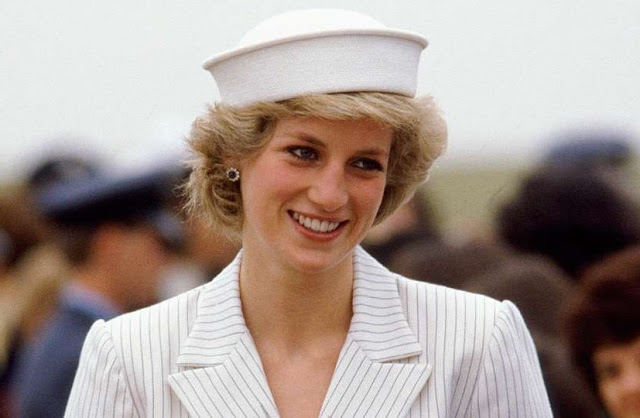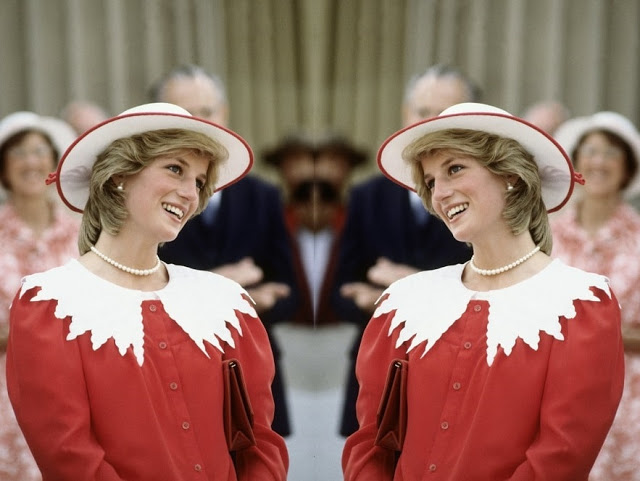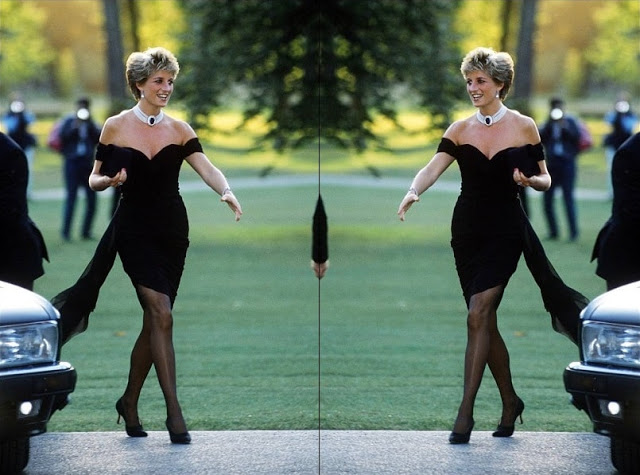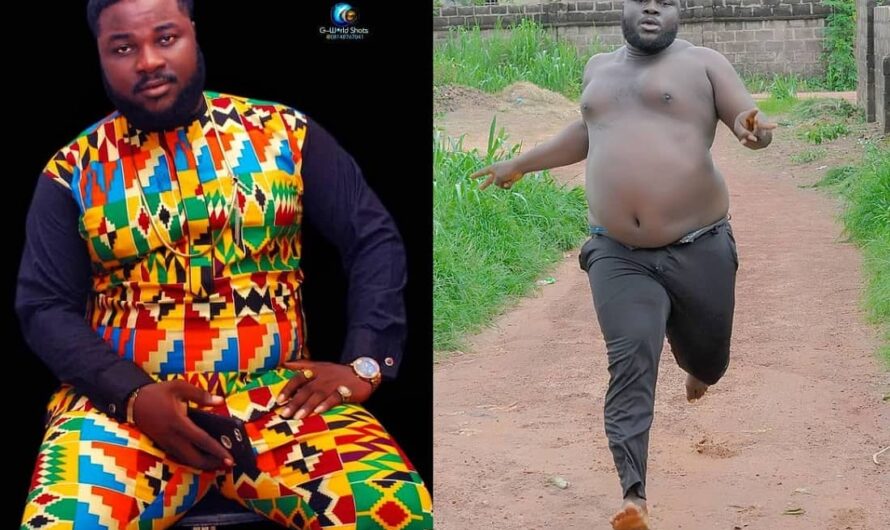by Diana Arneson
From an American perspective:
Diana was a very pretty young girl who loved beautiful, fashionable clothes and wore them well. This was quite a departure for the British royal family, who were very much respected in the U.S., but regarded as rather staid and unimaginative (albeit regal) in appearance and dress.
Americans could identify with her: her shyness, her interest in fashion and celebrities; the fact that she wasn’t particularly intellectual or well educated, the fact that she wasn’t royalty (even though her family was decidedly wealthy and blue-blooded); the fact that she came from a broken home. I remember we all took her to our hearts the day before her wedding, when, faced with hundreds of cameras and onlookers, she suddenly broke into tears and hurried away.
The next morning, she was radiant. As she stepped into the royal coach, she was a picture of pure joy in her lavish gown with what seemed like miles of tulle veiling. In contrast, Prince Charles, riding in a landau toward the cathedral, looked grim and intimidated. I remember we laughed at the contrast, little realizing how prophetic it was.
Within a short time, the new Princess of Wales had become the most popular member of the royal family, and (not coincidentally) the prettiest and most elegantly dressed. She fairly sparkled. Her gowns and hats were romantic, like something a fairy tale princess would wear. She quickly provided two attractive and charming male heirs.
That skill served her well when her marriage began to fall apart. She learned to upstage her husband, and she even went on national TV to tell her side of the story (dressed in black, wearing makeup that made her look sadder and more pensive than usual), knowing full well that Prince Charles would be unable (as per royal tradition) to retaliate. Much of the public took her part, assuming that she was blameless, that Prince Charles was a villain and 100% responsible for the marriage’s failure.
And, yes, Prince Charles was certainly wrong to cheat on her. It seemed to me that he was caught between two royal traditions: the old one, meeting the expectations of the Duke of Edinburgh, that required the heir to the throne to marry a suitable young virgin to provide heirs (but not necessarily to be faithful to her), and the more modern one, that required the heir to the throne to choose a bride whom he loved and knew very well, regardless of her social status, and to be a nuclear family role model.
Prince Charles should never have cheated on her; but, then again, perhaps he shouldn’t have married her, either. They had virtually nothing in common; didn’t even know each other very well. They’re both from the same generation, but at the extreme ends of it. He loves the country; she was a city girl. He’s considerably better educated than she is (she left school at 15).
The bottom line (from my perception, at least) is that Diana came closest of any royalty, other than Princess Grace of Monaco, to resembling the American version of royalty (i.e., Hollywood celebrities). We like our celebrities to show human frailties, so we didn’t mind her faults.
One contemporary referred to her after her death as “flawed but lovable.” I think that sums it up quite well.
NOTE: This is only my perception. There are many Americans who would probably disagree with me.






Our Princess she was